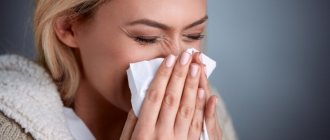Chicken pox is one of the most common diseases. Most people manage to get sick from it at the age of 2-10 years. Children usually tolerate the disease easily. Therefore, they quickly get bored with home quarantine; they want to quickly get out of the house for a walk, play with friends in the fresh air.
Loving parents, naturally, indulge their child’s requests to let him out for a walk at least for a short time, neglecting consultation with a pediatrician. But only a doctor can clearly say whether it is possible to walk with chickenpox or not, and whether it is dangerous for children.
Even a gauze bandage will not protect a child from the chickenpox virus
Is it possible to walk if you have chickenpox?
Many parents believe that chickenpox is a harmless infection, since most children tolerate the disease quite easily. There are even especially “caring” mothers who go to visit an infected child in order to get over chickenpox as early as possible. For the same reason, some children's institutions refuse to impose quarantine during a chickenpox epidemic.
Chickenpox can be dangerous, since some children have great difficulty enduring such pathologies and suffer complications both during and after the illness.
Parents who have a democratic attitude towards their children should think about those children for whom chickenpox will cost their health, and stop wanting to infect others with chickenpox.
The answer to the question “is it possible to walk with chickenpox?” will be "NO".
It's best to stay home if you have chickenpox
Features of the infection
This disease occurs with the same symptomatic picture regardless of the patient’s age. The difference can be called a different level of aggression manifestations. So why can’t you walk outside if you have chickenpox?
The main reason for imposing quarantine is the high level of infectiousness, which is explained by the following characteristics of the infectious agent:
- Chickenpox is transmitted from an infected person to a healthy person through direct contact with a sick person or direct presence within a radius of several meters from a sick individual. The predominant route of spread of infection is the air, where the chickenpox pathogen enters during talking, sneezing, yawning or coughing. The “vehicle” for the virus is the liquid secreted by the mucous membranes of the mouth, throat and nose - saliva and mucus. This fluid, at the time of the first symptomatic manifestations, contains a large amount of the infectious agent, which, when it enters the body of a healthy person, through inhalation of oxygen containing tiny particles of the carrier fluid, provokes the development of the disease. In addition, at the stage of development of chickenpox vesicles, the liquid contained in them also has a high concentration of the virus. Contact of this liquid with the mucous membranes of the oral/nasal cavity can also provoke the development of infectious processes;
- A person from birth is very susceptible to the chickenpox virus, due to the lack of immunity to this strain;
Note that the causative agent of the disease is capable of covering impressive distances, taking into account gusts of one-way air flows, bypassing artificial and natural barriers. The distance that the virus can travel is in some cases about 100 meters.
Why you can’t go for a walk – 3 important points
Let's look at the reasons.
- Chickenpox is not an easily tolerated infection for all patients. Some children have difficulty surviving smallpox. Already from the first days of the disease, they develop a high fever, which lasts for about a week; the whole body is covered with a profuse rash that is very itchy. Because of this, they eat practically nothing, sleep poorly, and languish from constant discomfort. Infections are especially dangerous for children with chronic pathologies and symptoms of immunodeficiency. No one is also immune from complications (for example, pneumonia or encephalitis).
- An adult can also get chickenpox. An infected child can infect an adult, and adult chickenpox is much more serious than childhood chickenpox. In adult patients, there is a high likelihood of complications, scars and cicatrices on the skin after a rash. Transmission of the virus to a pregnant woman.
- During pregnancy, a woman's body is especially vulnerable to infections. Even a common cold can cause serious complications for the fetus. Chicken pox, which a woman contracts in the first trimester, threatens the appearance of severe pathologies in the unborn baby. The disease can provoke chickenpox in a newborn immediately after birth. You should not listen to those people who say that you can walk outside with chickenpox. The patient is isolated from other people for 2-3 weeks. No walks, visits or receiving guests are also allowed.
General information about chickenpox
Some features of the disease:
- Rarely occurs in newborns and children of the first years of life. In this group of patients, infection is possible only in the case of intrauterine infection (TORCH infection) or at birth from HIV-infected mothers, when there is no natural protection by maternal antibodies.
- Attenuated varicella zoster vaccines can be used to prevent or suspect chickenpox infection. After vaccination, there is no protective regime (walks and visits to the garden or school are allowed).
- After an infection, stable lifelong immunity is formed.
- Adults, pregnant and lactating women, as well as people with immunodeficiency constitute a risk group, since their chickenpox is extremely severe, even fatal.
Is it possible to go outside if there is no temperature?
Lack of fever is not always a plus. Most often, this signals that the child’s immune system is weakened and cannot adequately fight infection. This “mild” form of chickenpox hits the skin and internal organs much harder.
The absence of fever during the course of the disease does not mean that the child can be allowed to leave home.
With this course of the disease, the infected person is not only capable of infecting others, but also getting complications himself. After all, the immune system does not fight the virus, the body is weakened, which means walking in the fresh air increases the risk of acquiring other diseases or worsening existing ones.
Walking if you have mild to severe chickenpox symptoms
There are times when you don’t have to wait until quarantine ends to go outside. Doctors allow this to be done provided that the baby has chickenpox in a mild form (for example, without an increase in body temperature, with a minimum number of rash elements on the body), if the family lives in a private house and has a large yard (several tens of meters), allowing do not contact your neighbors.
An open balcony or frequent ventilation of the room will help toddlers living in apartment buildings breathe oxygen. Fresh air has a beneficial effect on the child’s condition and also helps kill the virus.
Patients with severe forms are prescribed complete isolation, strict bed rest, drinking plenty of fluids and special care for inflamed skin throughout the course of chickenpox.
When can you go for a walk after illness?
The most dangerous time is the first 2-4 days of the disease. At this time, the infected person is actively fighting the virus and can infect others.
A weakened immune system devotes all its main forces to fighting chickenpox, and therefore the risk of contracting another infection or catching a cold is higher.
As a standard, strict quarantine must be observed for 5-7 days. During this time, the virus fades away and becomes harmless to others. However, many doctors advise quarantine for 2-3 weeks.
You can go for a walk after 9-10 days, but under the strict supervision of parents and without contact with the environment and other people.
You can go outside after illness 10 days after the first rash
General rules for walking
- Avoid crowded places. During illness, the risk of infecting others and getting a third-party infection by the infected person increases.
- The patient's skin is especially sensitive to UV radiation during illness. Avoid prolonged exposure to direct sunlight.
- For some time after recovery, you should avoid active games and physical activity. The body is still very weak for active actions.
- Avoid hypothermia, do not wrap your child in several layers of clothing. Dress strictly for the weather, choose clothes made from natural “breathable” fabrics.
- Swimming in rivers, lakes, and ponds is strictly prohibited until the skin has completely healed. At this time, there is a high probability of “catching” an infection, since the wounds on the body are open and vulnerable, and the immune system is not yet ready to fight a new infection.
Doctor's advice
Since chickenpox is a highly contagious infectious disease, general rules must be followed:
- If a child has chickenpox without a fever, it is prohibited to walk during the entire period of fresh rashes. This period averages 5-7 days from the moment the last element of the vesicular rash appears (with the exception of atypical forms).
- The child’s parents isolate him at home in order to limit the spread of infection (transmission route is through the air, infectiousness is almost 100%). Frequent ventilation in the room where the child is is acceptable. No specific disinfection is required.
- You should limit walks with your baby in case of direct contact with a sick person for an average of 10-21 days (the incubation period of the disease). This limitation is due to the fact that the child becomes infectious to others 2 days before the first clinical signs of the disease (rash, fever) appear.
- The risk of contracting chickenpox through close contact with an infected person in an open area is minimal. But restrictions are imposed, since the child spends a short time in public places (entrance, elevator) before going outside.
- It is required to limit the child’s attendance at kindergarten and school for the entire period of illness and for the duration of the incubation period due to the impossibility of eliminating the risk of infection.
- A child with chickenpox should go outside in winter only after all the crusts have fallen off (7-10 days after the last rash). Why? This restriction is imposed for preventive purposes, since in winter the skin is exposed to low temperatures, and therefore becomes more fragile. Cold exposure somewhat slows down the healing process of vesicles and can lead to their traumatization with the formation of a scar.
- Restrictions on walking are also imposed in order to minimize injury to the vesicles. If they heal on their own, they go away without a trace, but if the crust or element of the rash is torn off, an atrophic scar is formed in its place, which can only be removed by surgical methods.
Recommendations for mild forms of the disease
Many parents are interested in the question of whether it is possible to walk with children with chickenpox, given the absence of fever and other visible manifestations of the disease. Pediatricians, including the famous Dr. Komarovsky, believe that even with a mild course of the disease, you should not go for walks with your child. Thus, in the case of a mild illness with minimal rashes, the rules remain the same - possible contact of a sick child with healthy children should not be allowed.
How long is the walking restriction in effect?
General symptoms of the disease in children with chickenpox rarely last throughout the entire period of the disease, and usually disappear after 1-2 days of rash. However, a decrease in temperature is not an indicator of recovery and it is necessary to maintain a protective regime until the blisters gradually become covered with a crust (people remain contagious until all lesions are covered with it).
During the period of drying of the crusts, when there are no new rashes (7-10 days), you can go out with your child for short walks, but you must adhere to the following recommendations:
- In summer, you should not swim in ponds due to the risk of infection through injured skin.
- You should not immediately resume full physical activity after an illness. It is optimal to gradually increase the walking time over 2 weeks until you return to the individual norm.
In case of illness of a child with immunodeficiency, due to a weak immune response, it is necessary to increase the period of home isolation to 15 days. This limitation is due to the fact that after chickenpox the child’s immune system will weaken even more and the risk of contracting other infectious diseases will increase sharply.











